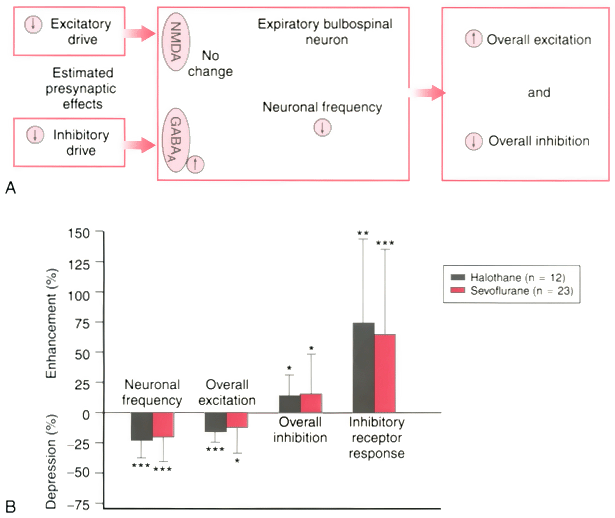 |
 |
Figure 6-18
A, Schematic diagram of
the effects of volatile anesthetics on synaptic transmission to expiratory premotor
neurons in the caudal ventral respiratory group. The overall glutaminergic excitatory
drive is reduced without effecting NMDA receptor function, and overall inhibition
is increased because of an increase in GABAA
receptor function. Presynaptic
inhibitory drive is also reduced, leading to a decrease in control discharge frequency
of the premotor neuron. Red arrows represent anesthetic
effects. B, Effects of halothane and sevoflurane
on excitatory and inhibitory neurotransmission to canine medullary expiratory neurons.
Mean changes ± SD are given for neuronal control frequency, overall excitation,
overall inhibition and inhibitory receptor response by 1 minimum alveolar concentration
(MAC) of halothane and sevoflurane (*P < .05,
** P < .01, *** P
< .001 versus no change). (Adapted from Stucke AG, Stuth EAE, Tonkovic-Capin
V, et al: Effects of halothane and sevoflurane on inhibitory neurotransmission to
medullary expiratory neurons in a decerebrate dog model. Anesthesiology 96:955,
2002.)

 |
